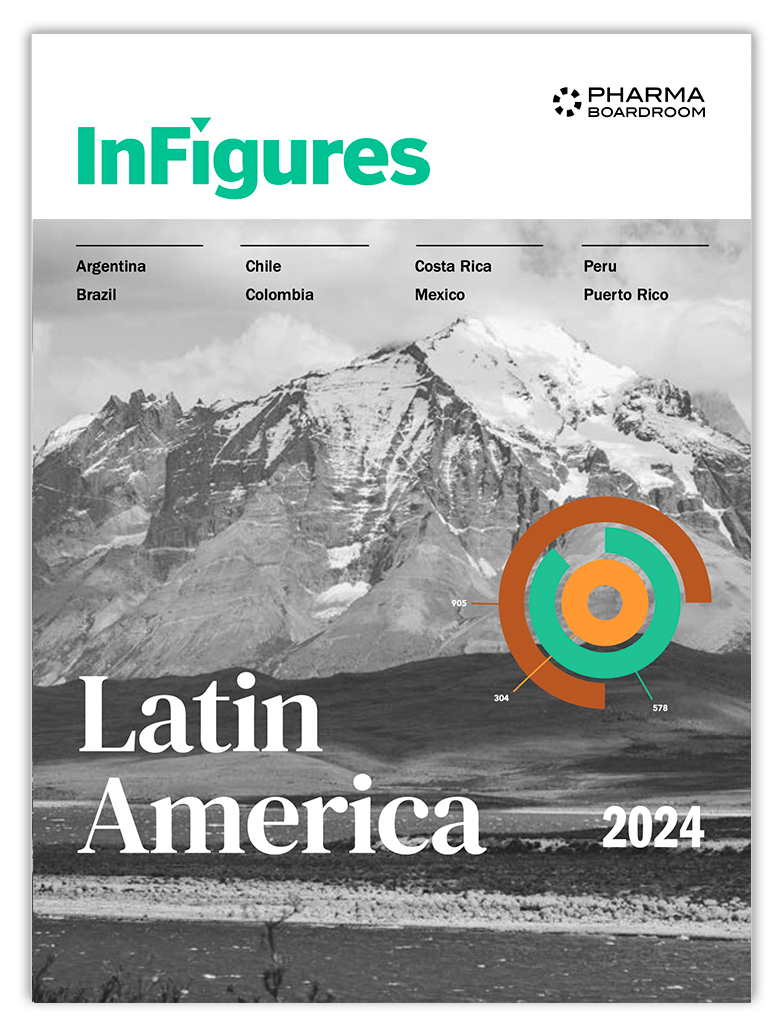Cecilia Calder
ón shares her experience as founder and general manager of Vigpharma, her perspectives on the pharmacovigilance and technovigilance in Mexico and the main challenges that come with being the leader in this sector.
What was the original vision behind Vigpharma?
The company was established in 2013 with three people. Mexico’s first pharmacovigilance law was implemented in 2005, which means that pharmacovigilance and technovigilance are emerging sectors and there are not a lot of people familiar with it. The vision behind Vigpharma was to provide a confident service for the pharmaceutical sector in this area. I have been working in the pharmaceutical sector for around 12 years, always in pharmacovigilance. When this law was implemented in Mexico, I realized that there would be a need for such a service. I started thinking about the idea and decided to do it. Since then, it has been working very well because there are a lot of challenges for companies working on pharmacovigilance and technovigilance activities across the country. The name of the company comes from the words “vigilance” and “pharma”.
What are the company’s most recent significant milestones?
Only a few months after the company’s foundation, our client list had grown immensely: large-sized multinational pharma companies and also national companies. Our clients recommended us to other people and we are very proud of that because it demonstrates that we are providing a very good service.
What have been your key priorities?
My main priority is to fortify the pharmacovigilance field in the country and act as support not only for the pharmaceutical industry, but also for the authorities, because we are developing this relatively new field together. We have to share our experiences with the local authorities because we are working with international companies and learning a lot about what is happening in the pharmacovigilance sector worldwide. The Federal Commission for the Protection against Sanitary Risk (COFEPRIS) has invited us to participate in various seminars and conferences and we are working together with them, trying to show and to teach the principal activities in pharmacovigilance.
Could you introduce your portfolio of services to our readers?
Our portfolio is very focused on pharmacovigilance activities: we develop risk management plans for products, and follow the international and local regulations, especially for Mexico where it is rather different from the regulation worldwide. We do safety periodic reports, named PSURs. We propose case processing and develop active pharmacovigilance protocols, which are a local requirement in Mexico. We support different companies by sending pharmacovigilance experts to them: an expert who is part of Vigpharma and is working in a given company on a given project for a short period of time. For technovigilance, the process is more or less the same.
We are also training employees in pharmacovigilance and technovigilance and helping companies to implement pharmacovigilance or technovigilance units. In Mexico, one of the most important requirements for the new regulations is to resend a special report, called the pharmacovigilance report, and technovigilance report. Without these reports, it is impossible to renew the registry.
The whole portfolio is very complex, especially for people who are not familiar with the industry. Therefore, we have to explain and provide details about why they have to comply with the authorities. This is the most difficult part because people, not working in pharmacovigilance, do not understand what a risk management plan or a technovigilance report means. The whole portfolio and the relations are complicated. Furthermore, people are not aware of the concepts and the size of the activities. There are more customers in the pharmacovigilance side of our business but the technovigilance activities are growing significantly too because of the mandatory requirement.
What are the main challenges that you face today in your business?
The biggest challenge is that Mexico has a cultural problem: pharmacovigilance and technovigilance are not subjects learned at college even for health professionals. It is something that you face once you are working for pharmaceutical companies. Consequently, the biggest challenge is to change and contribute to the cultural level of the country and to establish these activities and relations as part of people’s lives. In Mexico only few types of the drugs are dispensed with a medical prescription. Must of the drugs can be acquired without a medical prescription in the pharmacy. This is the reason why dispensing of drugs in the pharmacies is an important factor that contributes to the occurrence of adverse events, since people do not always care or do not pay attention to the leaflets and/or instrution included in the packages with the most important information on the drugs, or to their side effects. In addition, when they experience a side effect, they do not report it. A lack of culture is always present in the medical environment, Health Care Professionals are not used to report adverse events. Changing the cultural level of the country is a challenge. I do believe that this change will happen.
Could you please expand on how you are working with the different Mexican associations?
I am very proud to say that I was the founder of the Mexican Pharmacovigilance Association and named as the first President of the Association. Today, I am part of the executive board of the ex-presidents of the Association.
I am working with another associations dedicated to working in the regulatory field, such as the Mexican Association of Professionals in Health Regulation (AMEPRES), for which I was named head of the Pharmacovigilance Commission. But I am also working within the Association of Medical Specialists in the Pharmaceutical Industry (AMEIFAC). As associations we are working to improve, promote and contribute to education in all fields involved in the pharmaceutical environment (Regulatory, Pharmacovigilance, Technovigilance, Clinical Trials, etc.), through promoting trainings, seminars, academic sessions as well as congresses, in which we try to include pharmacovigilance topics (and others as previously mentioned) and COFEPRIS is invited to participate in such events, in order to facilitate communication between associates and authority but also to work together on topics where the support of different actors is needed for the benefit of the country.
I work mostly within the pharmacovigilance field and try to be very near to the Mexican Association of Pharmacovigilance not just because I was the founder and I have a very special motivation, but because this association is the one that is fully dedicated to pharmacovigilance and technovigilance activities. However, my focus now is on AMEPRES, a new association, which is working well.
Does the pharmacovigilance and technovigilance level in Mexico reach the global requirements?
Both areas have only recently been introduced in Mexico. We have to start from the very beginning because as I mentioned before, there is a problem with cultural thinking. I have been working for transnational companies and in my experience I can say that pharmacovigilance and technovigilance systems in transnational companies are in compliance with international regulations but sometimes the challenge is comply with the local regulation and with COFEPRIS’s requirements. Sometimes this is a double work, because you have comply with the specific international requirements and the harmonized concepts and at the same time, adapt your activities to be in compliance with the Mexican regulation, because our local authorities do not always consider the harmonized concepts or rules. In addition it is important to consider differences in languages, all this makes it is different and complex.
How does this sector in Mexico compare with other countries in the region?
Mexico has been growing fast in the pharmacovigilance sector. In comparison to other South America countries, with the exception of Brazil and Argentina, we have the fastest growing system. There are many aspects that can still be improved but we are going in the right direction. The authorities are very conscious of the importance of pharmacovigilance and of people’s safety. I think that in comparison with other countries we have a very high level of pharmacovigilance and technovigilance. We are not on the top but we do have one of the best pharmacovigilance systems in Latin America.
How do you attract the key people in your company?
I have worked for a long time in major companies and trained a lot of people. Some people grew with me and followed me when I started the company. But I am also very careful to hire new people since I think the most important aspect is to have enthusiastic and proactive people.
We also have a partnership with a national university. The Polytechnic Institute will be providing us with scholarships in order to cover their required social service but at the same time we are ensuring the training in Pharmacovigilance and Technovigilance. We are training new people and they are supporting us.
Why is Vigpharma the partner of choice in Mexico today?
I believe that the brilliance is with us. Pharmacovigilance and technovigilance are sectors in which I started in the country. People know me very well because I have a lot of experience working for different top ten companies, but currently in the company my team is also very well known in the field. Because of the situation in the country, there are many people offering their help but the reality is that they do not always have an idea of the services and are not confident. I worked together with the authorities and I understand very well the regulation. I am also familiar with the international regulations because I had the opportunity to travel around the world and attend congresses and many other activities related to pharmacovigilance and technovigilance. We are the best choice because we are the experts in what we do. People must know that when they buy a service, they have to be very careful in the profile of the people who will provide the service, because pharmacovigilance activities are critical and no mistakes can be allowed. Patient safety is essential and people have to select their very best option.
Where do you see the company in five years’ time?
Growing and with more clients. Keeping the leader’s place in the pharmacovigilance and technovigilance sector in Mexico and eventually playing a key position worldwide.







